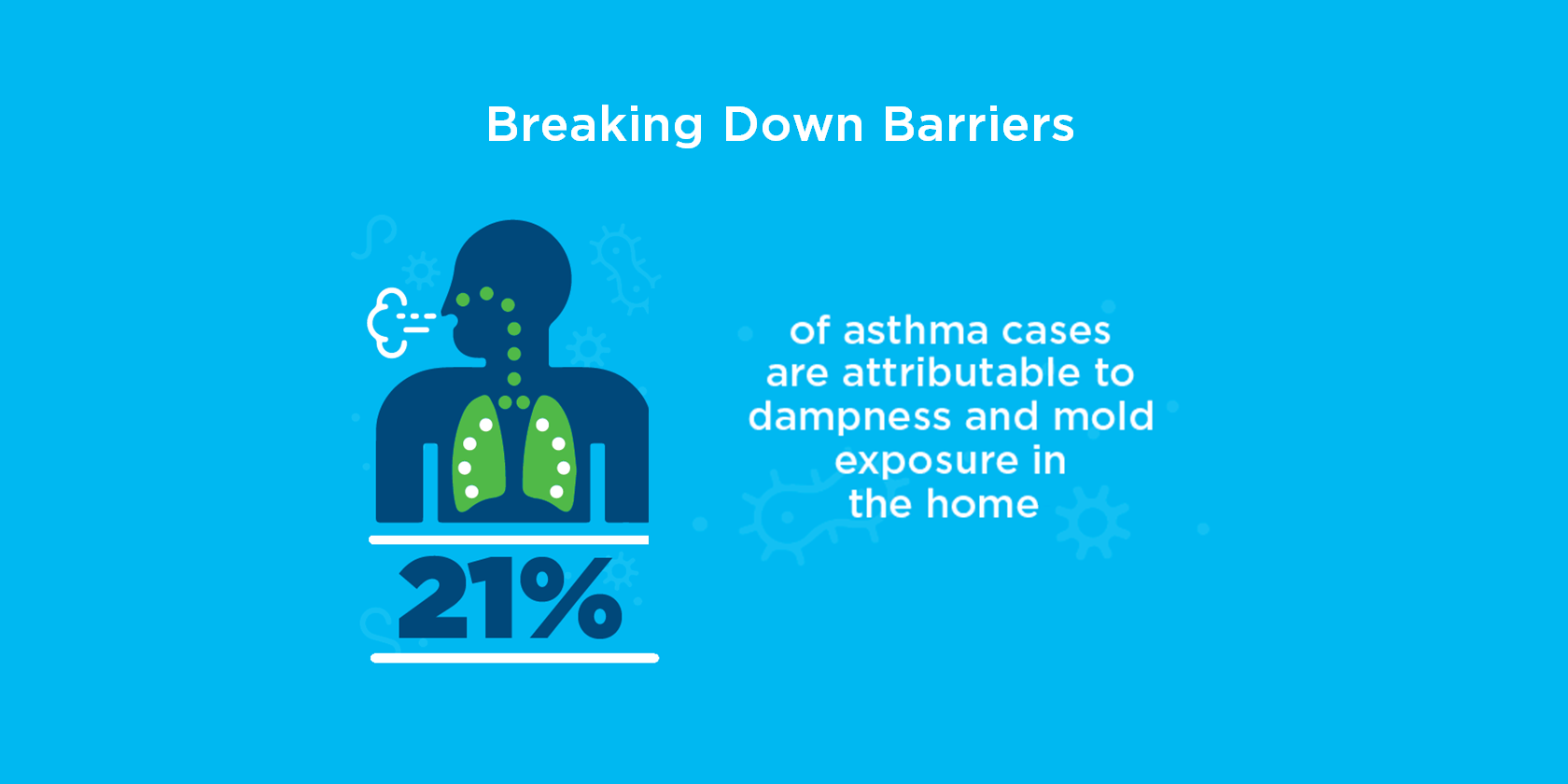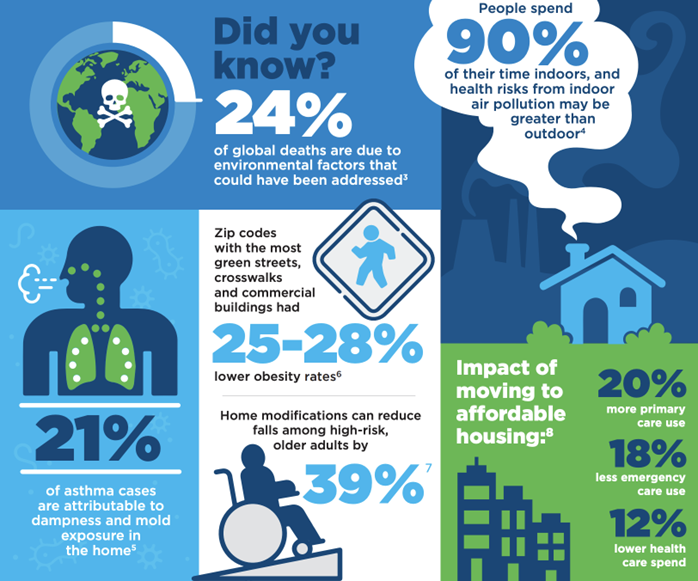
What Is Housing Instability?
Housing is often cited as an important social determinant of health. According to Healthy People 2030, housing instability encompasses various challenges such as difficulty in paying rent, overcrowding, frequent moves, and spending a large portion of household income on housing. These factors can adversely affect physical health and make accessing health care more challenging for patients.
How Do Environmental and Housing Conditions Affect Patient Health?
The neighborhoods people live in have a major impact on their health and well-being. In addition, poor housing is often associated with a wide range of health conditions, including respiratory, cardiovascular, and infectious diseases.
Did you know:
- 24% of global deaths are due to environmental factors that could have been addressed
- People spend 90% of their time indoors, and health risks from indoor air pollution may be greater than outdoor
- 21% of asthma cases are attributable to dampness and mold exposure in the home
While housing instability contributes to health disparities, improved housing and environmental conditions can significantly enhance an individual's health and well-being. When people live in areas with more green spaces, safer streets, and better-designed facilities, their overall health tends to improve as well. According to statistics:
- Zip codes with the greenest streets, crosswalks, and commercial buildings had 25-28% lower obesity rates.
- Home modifications can reduce falls among high-risk, older adults by 39%
- There are significant positive effects on the health of patients when they move to affordable housing:
- 20% increase in the use of primary health care services
- 18% less emergency care use
- 12% lower health care spend

How Can You Help as a Physician?
1. Proactively learn about a patient’s housing condition
Learn more about the communities your patients live in and ask questions that help identify what barriers they may be experiencing.
2. Educate patients about indoor air quality
Explain how the indoor air quality of their home may be impacting their health, and discuss practical steps they can take to improve, such as proper ventilation and using air purifiers.
3. Advocate for home safety and reduce the risk of falling
Help patients prevent falls, especially among the elderly. Educate them about potential home modifications and interventions that can make their living spaces safer and encourage at-risk individuals to adopt these safety measures.
4. Guide patients to support services and resources
Remind patients to call 211 to get connected with human service agencies and community organizations that can help with things such as housing assistance and home modifications.
5. Get involved in community health initiatives and advocacy
Advocate for change in your community, explore programs offered by your local housing authority and homeless coalition, and consider volunteering with organizations such as Habitat for Humanity.
Conclusion
By adopting these strategies, physicians can play a pivotal role in addressing social determinants of health, such as housing conditions, that have a profound impact on patient well-being.
To read more insights on our “Breaking Down Barriers” series, check out the CareAllies resources page.
CareAllies is a leading organization supporting physicians in successful value-based care. Learn more about what we do and contact us to explore how we can assist you in your journey.